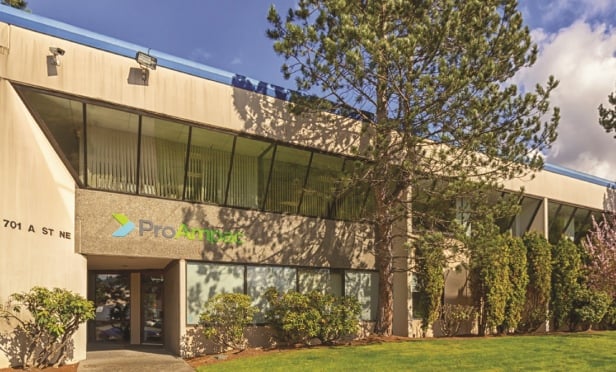IRVINE, CA—Difficulty sourcing good candidates for value-add industrial could reduce overall transaction volume for MCA Realty in 2016, principal Tyler Mattox tells GlobeSt.com. The firm recently acquired two multitenant industrial assets totaling more than half a million square feet in the Inland Empire for a combined total of $36.8 million. Properties included a rare, 127-unit complex in Riverside and a 91,326-square-foot building in Temecula. In addition, the firm recently increased its investment in Las Vegas with the acquisition of four industrial properties including Abacus Industrial Center, a two-building complex totaling 58,240 square feet, purchased for $68 per square foot; a 31,000-square-foot multitenant building in Northern Las Vegas for $55 per square foot; a 26,000-square-foot single-tenant building near McCarran International Airport for $85 per square foot; and a 21,807-square-foot single-tenant building close to the airport for $85 per square foot.
We spoke exclusively with Mattox about the recent acquisitions, trends he is noticing and what he foresees for the future.
GlobeSt.com: MCA Realty has been extremely active in recent months, particularly in the incubator industrial space. What is attractive to you about this asset class, and what trends are underway that might impact this product type?
Mattox: From our perspective, this asset class, relative to most of the other commercial real estate sectors—big-box industrial, neighborhood retail, office and apartments—is trading well below its replacement cost. Rents need to rise dramatically to justify building it, so you can evaluate an asset and not worry that something is going to be built across the street to compete with it. In all cases, we're buying at some discount to replacement cost, and in most cases we're also buying below or just below peak values. In California in particular, peak value is changing, but replacement cost is relevant. As land value escalates, replacement costs escalate $3 per square foot.
As far as trends that might impact it, we've seen this recovery starting in 2010 as pretty much a top-down recovery, which is not characteristic of most past recoveries. Typically, recoveries started with small business, but most of the tenants in this product type are mom-and-pops that have been slow to recover from the downturn—they were hit pretty hard by it. In the later stage of recovery, there will be some pent-up demand to push rents reasonably aggressively. Our portfolio has been relatively well leased, around 95% leased shortly after acquisition, but we haven't been able to push rents until the last 12 months. We hope this trend will continue, and we think it will.
GlobeSt.com: What is your firm's overall investment strategy? How is your approach to acquisitions and owned assets different from others in the industry?
Mattox: Within the broader investment arena, we focus pretty narrowly on what we are buying that's relative to replacement costs and peak values. We look at price per square foot because the one thing you can't change is the price you paid for it. Our focus in what we're buying is pretty narrow. We understand the market, and we are not afraid to take vacancy risks, which is different from our peers. If spaces are functional, we can bring them to move-in-ready condition and get them leased. We don't put as much of a premium on in-place rents as others do. We focus on coming in and stabilizing that rent roll. Generally, we're getting mom-and-pops or start-ups with a small number of employees and that's their only location. We tend to trade that for the diversification of having 50 high-credit tenants.
GlobeSt.com: We understand that it is becoming increasingly difficult to identify value-add assets for acquisition. How is your firm sourcing deals in the current competitive market?
Mattox: We rely on the brokerage community for the most part. I don't think we have made any acquisitions that weren't brought to us by a broker. This is getting much more difficult, and we look at considerably more assets than we did three years ago to find one that we want to do. The work load has gone up a lot to find the right property. The bid/ask spread seems to have gone up, and what we think the property is worth is most often below what sellers believe it's worth. This wasn't the case a few years ago, when sellers were more included to sell because they had to or were monetizing the property. In a lot of cases, the seller's perception of value as pricing to perfection makes it harder to buy.
GlobeSt.com: Your company invests in multiple markets throughout the Western US. What market fundamentals or product attributes do you look for when investing in different markets?
Mattox: The primary metric we look for is job growth. At the end of the day, that drives a lot of commercial real estate. We also look at the markets that we feel have bene underpriced for whatever reason—usually they have been hit hard by recession and are beginning to come back. We look at where we are in the cycle, relative to peak value, are and more comfortable buying as big a discount to replacement cost as we can, so we look at markets where that exists.
This has become harder to do. We bought a lot in Las Vegas in 2012 and 2013, and at that time the market was perceived as an outlier by the institutional-investment community so we didn't have to compete as much. That has done a 180, and the price per square foot in terms of discount to replacement cost and peak value has narrowed considerably. We also look at population densities when considering markets.
GlobeSt.com: What plans do you have for the future?
Mattox: We're continuing to grow our portfolio. We have capitalized most of our transactions with private capital, and we're looking to broaden our capital sources from a private bent to a little more of an institutional bent. This is a natural evolution for companies in our space. We will probably do less volume in 2016 than we have in past years for the first time since we started the company in 2011. It'll just be harder and harder to find assets to buy at the prices we want to buy them at, so we anticipate not as large a transaction volume as have done in the past.
© 2025 ALM Global, LLC, All Rights Reserved. Request academic re-use from www.copyright.com. All other uses, submit a request to [email protected]. For more information visit Asset & Logo Licensing.







